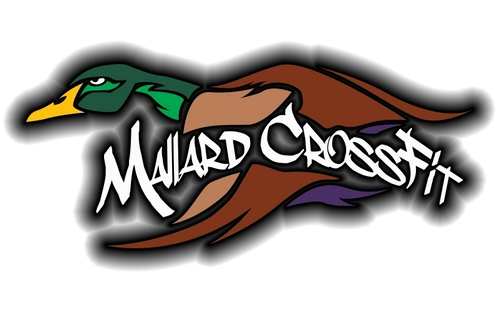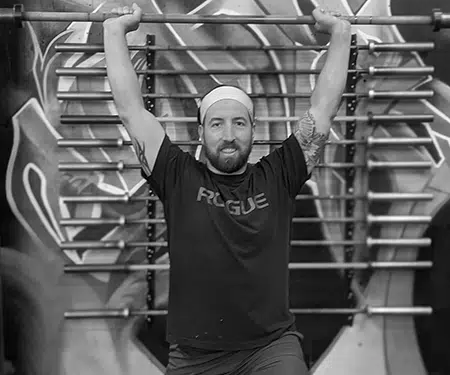Chatbots vs conversational AI: Whats the difference?
This system also lets you collect shoppers’ data to connect with the target audience better. From real estate chatbots to healthcare bots, these apps are being implemented in a variety of industries. Conversational bots can provide information about a product or service, schedule appointments, or book reservations. While virtual agents cannot fully replace human agents, they can support businesses in maintaining a good overall customer experience at scale.
Chatbot vs. conversational AI can be confusing at first, but as you dive deeper into what makes them unique from one another, the lines become much more evident. ChatBot 2.0 is an example of how data, generative large language model frameworks, and advanced AI human-centric responses can transform customer service, virtual assistants, and more. Generative AI agents are computer programs that use interactive software to mimic human actions and responses. These virtual agents use generative AI — which creates original and realistic text, images, videos and other media — to power voice or text conversations. They can make inferences about themselves and others, recall previous experiences and formulate strategies based on their surroundings. Conversational artificial intelligence (AI) is reshaping the world of customer service through virtual agents, chatbots and other advanced software.
But Gemini is not in the business of selling a million small tailored models. Ideally, you want to be able to just tell the model “don’t be racist,” and have it understand what you mean and in what contexts it might be okay or not okay to depict non-diverse sets of people. That is what we would expect a competent human assistant to do if given those kinds of instructions.
Chatbots vs conversational AI: 3 main differences
Chatbots parrot human conversation to automate specific customer service tasks, such as query responses. Besides chatbots, it encompasses several types of innovative software that imitate human conversation. Conversational AI is any technology set that users can talk or type to, then receive a response from. Traditional chatbots, smart home assistants, and some types of customer service software are all varieties of conversational AI. That’s why chatbots are so popular – they improve customer experience and reduce company operational costs. As businesses get more and more support requests, chatbots have and will become an even more invaluable tool for customer service.
By capturing information from the help center, Gal ensures passengers receive accurate and timely responses, saving valuable time for GOL’s customer support team. It will help you engage better with your customer in a more natural and personalized way. You will be able to collect and analyze data from customer interaction and offer valuable insight into customer tastes and preferences, and pain points. This can further help you improve your product and service and enhance the overall customer experience. You’ve certainly understood that the adoption of conversational AI stands out as a strategic move towards more meaningful, dynamic, and satisfying customer interactions.
And no doubt, businesses using automation have seen higher revenue growth and higher profits than those who don’t. Get potential clients the help needed to book a kayak tour of Nantucket, a boutique hotel in NYC, or a cowboy experience in Montana. You can also gather critical feedback after the event to inform how you can change and adapt your business for futureproofing.
In the second scenario above, customers talk about actions your company took and stated what they expect to happen. AI can review orders to see which ones were canceled from the company’s side and haven’t been refunded yet, then provide information about that scenario. On their website, home-buyers use conversational AI to either use voice or text to search for properties by dozens of different attributes, such as the number of bedrooms, square footages, amenities, and more. Buyers also have the ability to compare and contrast different listings and leave their contact info for further communications.
Despite the common occurrence of AI hallucinations — wrong answers generated by AI — in both ChatGPT and Gemini, the tools are being adopted by businesses and consumers seeking to automate time-consuming tasks. And then again, after seeing all of that information, I can continue the conversation that same way to drill down into that information and then maybe even take action to automate. And again, this goes back to that idea of having things integrated across the tech stack to be involved in all of the data and all of the different areas of customer interactions across that entire journey to make this possible. At least I am still trying to help people understand how that applies in very tangible, impactful, immediate use cases to their business.
By integrating intent-based bots with conversational AI, businesses can optimise their digital customer experience and get the best of both technologies. It encompasses various forms of artificial intelligence such as natural language processing (NLP), generative AI (GenAI), Large Language Models (LLMs), and machine learning (ML). For instance, in the hospitality industry, hotels use chatbots to handle guest inquiries, room reservations and concierge services. Chatbots efficiently manage routine tasks, ensuring seamless guest interactions and freeing up staff for more personalized services.
In-Depth Look Into Google Dialogflow vs Competitors in 2024
Either way, it’s important to ensure that the solution you choose aligns with your specific business needs and customer service goals. But, if you just want to reduce workloads for your customer support teams in a cost-effective way, an intent or rule-based chatbot might be a viable option. Beyond customer service and sales, chatbots and AI can also help with internal operations. They enable customer service operations to function 24/7, improving response times and overall efficiency. This round-the-clock availability is particularly beneficial for businesses operating across multiple time zones. Generative AI and Large Language Models (LLMs) take the sophistication of chatbots to a whole new level – allowing them to produce complex and flexible responses that are almost akin to what a human might say.
In February 2024, Google rebranded Bard as Gemini when it debuted an improved version of the AI chatbot. Generative AI tools like ChatGPT reached mass adoption in record time, and reset the course of an entire industry. Crucially, these bots depend on a team of engineers to build every single flow, and if a user deviates from the pre-built script, the bot will not be able to keep up. Popular examples are virtual assistants like Siri, Alexa, and Google Assistant. Thereby, businesses worldwide are embracing automation to speed up formerly time-consuming processes and close operation gaps that otherwise involve hours of spreadsheet work.
- Elisa can be used to answer questions about flights, refunds, or cancellations, check in for flights, and make changes to reservations.
- Hybrid chatbots typically use predefined rules/intents for specific tasks but also incorporate AI technologies like LLMs and generative AI to expand their adaptability, capabilities, and natural language understanding.
- Its conversational AI is able to refine its responses — learning from billions of pieces of information and interactions — resulting in natural, fluid conversations.
- The advanced capabilities of conversational AI allow for an in-depth understanding of patient needs, contributing to improved patient engagement and healthcare delivery.
The goal of the subfield of conversational AI is to make it possible for computers to converse with users in a natural, human-like manner. It uses natural language processing algorithms to comprehend and respond to human language while creating chatbots and virtual assistants. AI-based chatbots, on the other hand, use artificial intelligence and natural language understanding (NLU) algorithms to interpret the user’s input and generate a response. They can recognize the meaning of human utterances and natural language to generate new messages dynamically. This makes chatbots powered by artificial intelligence much more flexible than rule-based chatbots. At their core, these systems are powered by natural language processing (NLP), which is the ability of a computer to understand human language.
Taken together, the moves may indicate that cloud customers are balking at the expense and inflexibility of the proprietary models and opting for open-source options. This is also why I think the schism between researchers working on “responsible AI” and “AI Safety” is unfortunate. The idea of abandoning large models is also, in essence, an abandonment of the quest to create more human-like AI. I don’t think we are going to be able to put it back again and revert to simply using small models. Putting itself on this sort of pedestal when it comes to responsibility means that Google then has to try harder than other companies to put guardrails around the AI products it releases. Other companies may not have tried particularly hard to deal with the well-known issue that AI models trained on historically biased datasets unsurprisingly produce biased results.
Another scenario would be for authentication purposes, such as verifying a customer’s identity or checking whether they are eligible for a specific service or not. The rule-based bot completes the authentication process, and then hands it over to the conversational AI for more complex queries. They use machine learning to analyze and evaluate consumers’ past interactions and improve themselves as time goes by. In today’s digitally driven world, the intersection of technology and customer engagement has given rise to innovative solutions designed to enhance communication between businesses and their clients. The more your conversational AI chatbot has been designed to respond to the unique inquiries of your customers, the less your team members will have to do to manage the inquiry. Instead of spending countless hours dealing with returns or product questions, you can use this highly valuable resource to build new relationships or expand point of sale (POS) purchases.
He has also led commercial growth of deep tech company Hypatos that reached a 7 digit annual recurring revenue and a 9 digit valuation from 0 within 2 years. Cem’s work in Hypatos was covered by leading technology publications like TechCrunch and Business Insider. He graduated from Bogazici University as a computer engineer and holds an MBA from Columbia Business School. Or if you are running a pizzeria, you would expect all the digitized conversations to revolve around delivery times, opening hours, and order placement. You would not need to invest in an expensive conversational AI platform to, let’s say, offer pizza recommendations based on the user’s ethnicity or dietary restrictions.
It does have an Archive button that can list previous responses in ChatGPT’s left-hand pane for quick retrieval. Because even if we say all solutions and technologies are created equal, which is a very generous statement to start with, that doesn’t mean they’re all equally applicable to every single business in every single use case. So they really have to understand what they’re looking for as a goal first before they can make sure whatever they purchase or build or partner with is a success. AI can create seamless customer and employee experiences but it’s important to balance automation and human touch, says head of marketing, digital & AI at NICE, Elizabeth Tobey. In conclusion, whenever asked, “Conversational AI vs Chatbot – which one is better,” you should align with your business goals and desired level of sophistication in customer interactions.
While chatbots may offer a cost-efficient entry point, investing in conversational AI can lead to substantial returns through enhanced customer experiences and increased efficiency. When it comes to personalizing customer experiences, both chatbots and conversational AI play crucial roles. They enhance engagement by tailoring interactions to individual preferences, needs and behaviors. Traditional chatbots operate within a set of predetermined rules, delivering answers based on predefined keywords.
The no-coding chatbot setup allows your company to benefit from higher conversions without relearning a scripting language or hiring an expansive onboarding team. If you want rule-based chatbots to improve, you have to spend a lot of time and money manually maintaining the conversational flow and call and response databases used to generate responses. Conversational AI is more of an advanced assistant that learns from your interactions. These tools recognize your inputs and try to find responses based on a more human-like interaction.
Chatbots and conversational AI, though sharing a goal of enhancing customer interaction, differ significantly in complexity and capabilities. Consider your objectives, resources, and customer needs when deciding between them. Chatbot and conversational AI will remain integral to business operations and customer service.
Benefits of implementing a conversational AI
Careful evaluation of your needs and consideration of each technology’s benefits and challenges will help you make an informed decision. The digital landscape is ever-evolving, and chatbots and conversational AI are poised for remarkable growth. Zowie seamlessly integrates into any tech stack, ensuring the chatbot is up and running in minutes with no manual training.
What’s more, according to Google Trends, interest in chatbots has grown ~4x over the past 10 years. NLP isn’t the only conversational AI technology that can be incorporated into a chatbot. They employ encryption protocols, secure data storage and compliance with industry regulations to protect sensitive customer information, ensuring safe and confidential interactions. Conversational AI is a game-changer for customer engagement, introducing a sophisticated way of interaction.
What entrepreneurs need to know about Conversational AI – Appinventiv
What entrepreneurs need to know about Conversational AI.
Posted: Wed, 21 Feb 2024 08:00:00 GMT [source]
Xponent offers numerous other features like payment kiosks, email services and mobile push notifications to simplify communication with your customers. Your business can implement a digital engagement platform to contact customers via chatbots, call centers or email. While there’s a subtle difference between chatbots and conversational AI, both leverage ML and NLP to provide better customer service. In turn, you can potentially boost brand engagement, leads, sales and revenue.
Continuously monitor & improve performance
That said, the real secret to success with chatbots and Conversational AI is deploying them intelligently. With Cognigy.AI, you can leverage the power of an end-to-end Conversational AI platform and build advanced virtual agents for chat and voice channels and deploy them within days. Conversational AI can handle immense loads from customers, which means they can functionally automate high-volume interactions and standard processes. This means less time spent on hold, faster resolution for problems, and even the ability to intelligently gather and display information if things finally go through to customer service personnel. NLU is a scripting process that helps software understand user interactions’ intent and context, rather than relying solely on a predetermined list of keywords to respond to automatically. In this article, we will explain the differences between chatbots and conversational AI, look at what each one does, go over some of their use cases, and help you decide for yourself which is a better fit for your company.
A rule-based chatbot is suitable for handling basic inquiries, automating repetitive tasks, and reducing costs. In contrast, conversational AI offers a more personalized and interactive experience, enhancing customer satisfaction, loyalty, and business growth. However, implementing conversational AI demands more resources and expertise. Conversational AI can power chatbots to make them more sophisticated and effective. While rules-based chatbots can be effective for simple, scripted interactions, conversational AI offers a whole new level of power and potential.
These are only some of the many features that conversational AI can offer businesses. Naturally, different companies have different needs from their AI, which is where the value of its flexibility comes into play. You can foun additiona information about ai customer service and artificial intelligence and NLP. For example, some companies don’t need to chat with customers in different languages, so it’s easy to disable that feature.
Imagine what tomorrow’s conversational AI will do once we integrate many of these adaptations. Need a way to boost product recommendations or handle spikes in demand around Black Friday? Conversational AI helps with order tracking, resolving customer returns, and marketing new products whenever possible.
A chatbot is a computer program designed to mimic conversations with actual users, especially online. Chatbots are frequently utilized in customer service, commerce, and other industries where they can organically and intuitively communicate with people using text, voice, or even video. Generative Pre-trained Transformer, the model ChatGPT is based on, finds patterns within data sequences. Its AI language model produces responses to user queries and serves as the interface that lets users communicate with the language model.
From ChatGPT to Gemini: how AI is rewriting the internet – The Verge
From ChatGPT to Gemini: how AI is rewriting the internet.
Posted: Fri, 01 Mar 2024 00:52:00 GMT [source]
Rule-based chatbots lack the ability to learn or adapt beyond these predetermined responses. While they are suitable for handling basic and straightforward interactions, they often struggle to understand ambiguous queries or respond contextually. Conversational AI refers to technologies that can recognize and respond to speech and text inputs. In customer service, this technology is used to interact with buyers in a human-like way. The interaction can occur through a bot in a messaging channel or through a voice assistant on the phone.
This will not only increase the burden of unresolved queries on your human agents but also nullify the primary objective of deploying a bot. They argue it would be better to go back to creating smaller AI models tailored for specific purposes. This would allow the model builders to carefully curate a dataset for the problem the user is trying to solve. If you want to build an AI to generate accurate portrayals of ancient Rome, for instance, why not build a smaller AI model only to do that and train it only on images related to ancient Rome? And if you want it to create an AI model to generate images for marketing contemporary products, then maybe you give it the kind of instructions Google gave Gemini. In theory, it ought to be possible to fine-tune today’s large LLMs on small datasets and with specific prompts, for purposes such as these.
It can understand intent, context, and user preferences, offering personalized interactions and tailored experiences to users. Conversational AI is technologies like chatbots or virtual agents that are capable chatbot vs. conversational ai of understanding human language and interacting with them. They use large volumes of data, natural language processing, and machine learning to understand and interpret human language and respond accordingly.
However, the truth is, traditional bots work on outdated technology and have many limitations. Even for something as seemingly simple as an FAQ bot, can often be a daunting and time-consuming task. Your customer is browsing an online store and has a quick question about the store’s hours or return policies. Instead of searching through pages or waiting for a customer support agent, a friendly chatbot instantly assists them. It quickly provides the information they need, ensuring a hassle-free shopping experience.
- The ability of these bots to recognize user intent and understand natural languages makes them far superior when it comes to providing personalized customer support experiences.
- This reduces wait times and allows agents to spend less time on repetitive questions.
- Lastly, we also have a transparent list of the top chatbot/conversational AI platforms.
- If scalability and expansion are part of your business strategy, Conversational AI’s adaptability and potential to grow with your company make it an attractive option.
Conversational AI is a technology that simulates the experience of real person-to-person communication through text or voice inputs and outputs. It enables users to engage in fluid dialogues resembling human-like interactions. With rule-based chatbots, there’s little flexibility or capacity to handle unexpected inputs. Nevertheless, they can still be useful for narrow purposes like handling basic questions. Both chatbots and conversational AI are on the rise in today’s business ecosystem as a way to deliver a prime service for clients and customers.
A conversational AI chatbot lowers the need to intercede with these customers. It helps guide potential customers to what steps they may need to take, regardless of the time of day. The more your customers or end users engage with conversational interfaces, the greater the breadth of context outside a pre-defined script. That kind of flexibility is precisely what companies need to grow and maintain a competitive edge in today’s marketplace.
See why DNB, Tryg, and Telenor areusing conversational AI to hit theircustomer experience goals. Sign up for your free account with ChatBot and give your team an empowering advantage in sales, marketing, and customer service. This is a standalone AI system you control with advanced security for peace of mind. Everything from integrated apps inside of websites to smart speakers to call centers can use this type of technology for better interactions. This is an exciting part of AI design and development because it fuels the drive many companies are striving for. The dream is to create a conversational AI that sounds so human it is unrecognizable by people as anything other than another person on the other side of the chat.
Customer service teams handling 20,000 support requests on a monthly basis can save more than 240 hours per month by using chatbots. For example, if a customer wants to know if their order has been shipped as well how long it will take to deliver their particular order. A rule-based bot may only answer one of those questions and the customer will have to repeat themselves again. This might irritate the customer, as they didn’t get the info they were looking for, the first time. Picture a customer of yours encountering a technical glitch with a newly purchased gadget. They possess the intelligence to troubleshoot complex problems, providing step-by-step guidance and detailed product information.
Master of Code Global has provided a checklist of key differences in the table below to aid your decision-making process. For instance, there might be a list of predefined responses to customer queries like “how to return the product? When users send queries from one of these, the chatbot will recognize the intent and provide a relevant response.
So, if you want a chatbot that can automate more complex tasks and interactions, you’ll want to incorporate AI technologies, too. Throughout an interaction, a rule-based chatbot assesses user messages against its rule set, progressing through the decision tree to determine the most appropriate response. The majority of basic chatbots operate using a structured rule-based or decision-tree framework. But that doesn’t mean that rule/intent-based chatbots are completely redundant.
If your business requires more complex and personalized interactions with customers, conversational AI is the way to go.Let’s say you manage a travel agency. When customers inquire about vacation packages, conversational AI can understand the details they’re looking for. It can even provide personalized recommendations based on their preferences, dates and past trips, creating a more engaging and tailored experience. There are several common scenarios where chatbots and conversational AI are used to enhance customer interactions and streamline business processes. For instance, if a user types “schedule appointment,” the chatbot identifies the keyword “schedule” and understands that the user wants to set up an appointment.
So that again, they’re helping improve the pace of business, improve the quality of their employees’ lives and their consumers’ lives. Instead of feeling like they are almost triaging and trying to figure out even where to spend their energy. And this is always happening through generative AI because it is that conversational interface that you have, whether you’re pulling up data or actions of any sort that you want to automate or personalized dashboards.










